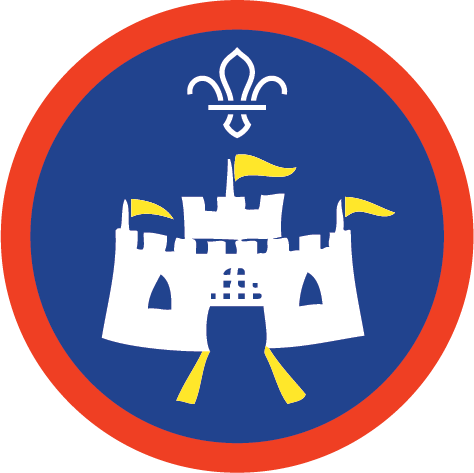Jail break
You’ll need
- Pens or pencils
- Scrap paper
- Hand-held radios or mobile phones
- Road map of your local area
- Timetables (if needed)
Before you begin
- Remind yourself about safeguarding in Scouts, so you know how to keep everyone safe during this activity.
- Think about other actions you can do to keep people safe, for example, making sure people stay in contact with an adult at the meeting place, setting a time for everyone to return, and making a plan for what to do if there are issues with signal or battery.
- You’ll need a leader for every two groups (one for every six young people), plus some extras to stay at the meeting place. Make sure you have enough leaders and that they all understand how the activity works. They’ll be using their car or public transport to get from one location to the other, while being directed by young people. If you’re using cars, you’ll need a car for every two groups too.
- If you’re using public transport, you may need to gather some timetables.
- Make a list of destinations in your local area. They should be at least eight kilometres (five miles) from your meeting place.
- You may need to split this activity across two meetings.
Rules of the road
- Split everyone into teams of three.
- Give each team a destination.
They should also explain what method of transport the teams will be using – will they be using cars or public transport?
- Each team should spend about 10 minutes planning a route from the meeting place to their destination. They should keep it simple – it shouldn’t include motorways or dual carriages, and they should only use basic directions such as ‘take the third left’, ‘head north along the road’, or ‘take the second exit at the roundabout’.
If you’re using public transport, it might include things like ‘take the number 55 bus’, ‘get off at the stop called Church Lane’, or ‘cross the road to the bus stop outside the library’.
- Everyone should work together to come up with some guidelines for the activity. They’ll probably include how to behave in the car or on public transport, and how to give clear instructions. If they’re using cars, they should think about how to talk to the driver without distracting them (and giving them enough notice to follow a direction).
Follow directions
- Pair up all the teams. They should keep their destinations and routes secret.
- Each pair should decide which team will direct first, and which team will direct second. Both teams will get a turn at both, so it doesn’t matter too much.
- Make sure everyone knows when they need to be back – they should make sure they return on time, even if they haven’t reached their destination yet.
- Once they’re ready, the first teams should set off on their journey. The teams back at the meeting place should use their route plan to direct the other team in their pair. The teams should aim to reach the end of the route and find the destination.
- The traveling team should make their way back to the meeting place.
- The teams should swap and repeat steps three to five, so both teams have directed and travelled.
Reflection
This activity needed everyone to problem-solve. People needed to figure out how to give clear instructions using just a map (and timetables). How did people make sure their instructions were clear? Did anyone predict any parts of the route that would be tricky, for example, a complicated set of roundabouts or lots of bus stops close together? Did anyone encounter any problems during the activity? Perhaps a team left the planned route or there were technology difficulties. How did people solve any problems?
This activity was also about communication. How did people make sure their instructions were clear? People might think about the words they used or how they spoke. For example, did people take it in turns to speak or wait until the first part of an instruction was clear before carrying on? Was it easy to understand the other team’s directions? Did people ask questions if they weren’t sure what something meant?
Safety
All activities must be safely managed. You must complete a thorough risk assessment and take appropriate steps to reduce risk. Use the safety checklist to help you plan and risk assess your activity. Always get approval for the activity, and have suitable supervision and an InTouch process.
- Dark
Provide some light, so the environment isn’t completely dark. Everyone must be able to see others and move around the area safely.
- Road safety
Manage groups carefully when near or on roads. Consider adult supervision and additional equipment (such as lights and high visibility clothing) in your risk assessment.
If you’ve done this activity using a car, why not try it again using public transport and ask people to notice the differences? People might notice how you have to time each leg of the journey or think about making it cost-effective.
- If anyone doesn’t want to talk on the radio or phone, they could keep track of the route or where the other team is.
- Make sure the routes are accessible for everyone. If you’re using public transport, make sure you’ve checked the access in advance. If you’re using cars, you may need to chat to people (and their parents or carers) to figure out how to make it accessible to them, for example, by using a car from home that’s already adapted.
All Scout activities should be inclusive and accessible.
You could let people pick their own destinations – just check that they’re suitable before they start route planning.
